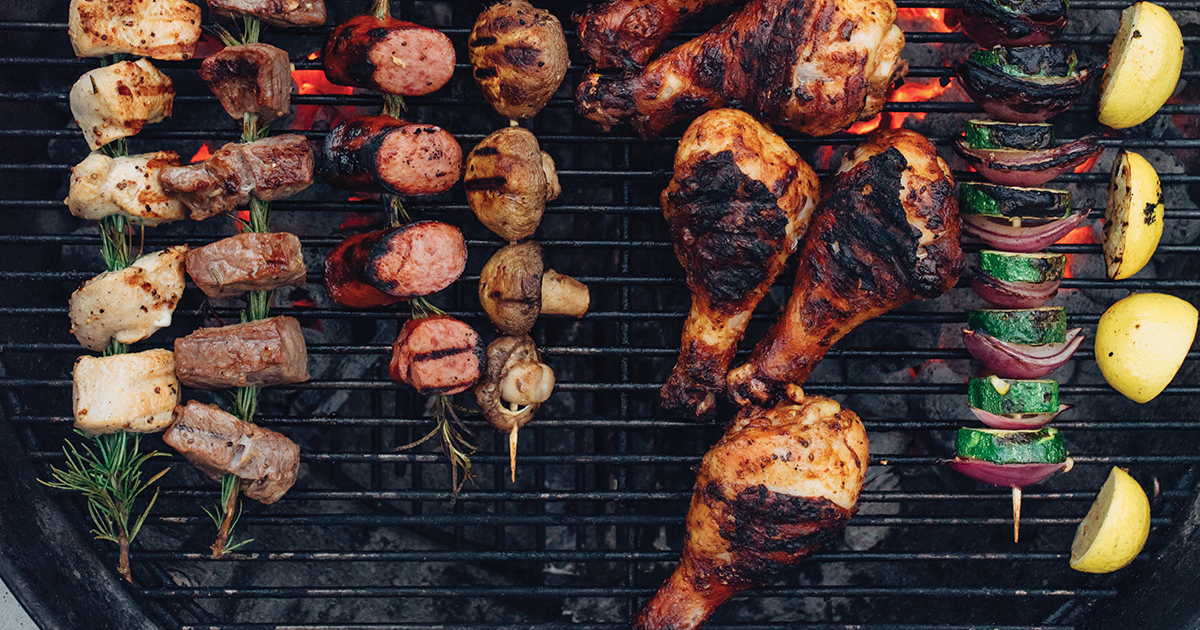I first met Elizabeth Karmel, a native of North Carolina’s barbecue belt, years ago when she was working for Weber Grills. It was immediately clear she knew more than anyone else at the company about the nuances of the grills. When a crowd of celebrity grill chefs—all of whom happened to be men—later emerged, the bulk of their knowledge, not surprisingly, had come from Elizabeth.
Following her stint at Weber, she created the menus as executive chef at both Hill Country Barbecue Market in New York and Washington, D.C., and Hill Country Chicken in New York. In 2015, she launched CarolinaCueToGo.com, an online barbecue shack, to make whole-hog barbecue (pulled pork from every section of the pig) more easily accessible. Since then, she has developed a line of kitchen and grilling tools and authored four books, including her latest, “Steak and Cake: More Than 100 Recipes to Make Any Meal a Smash Hit.”
To me, there is no better person to ask about quick tips for summer grilling than Elizabeth, who proclaims on her website, girlsatthegrill.com, “It is a man’s domain no more!”
WHAT ARE THE FIVE MOST COMMON GRILLING MISTAKES?
Choosing the wrong cooking method: My rule is that anything that takes 20 minutes or less to cook should be placed right over the heat source in what is called the direct method. For food that takes longer than 20 minutes, use the indirect cooking method: place the food in the center of the grill and turn off the middle burners underneath or bank the charcoal to each side. I use the combination method most: searing everything from thick steaks to roasts over direct heat and then finishing the cooking over a gentle indirect heat. Remember, the heavier and denser the food, the longer it needs on the grill. If a potato and a large shrimp are about the same diameter, the heavier potato needs indirect heat and the large, but lightweight, shrimp needs direct heat.
Oiling the grates, not the food: Many grillers think if they oil the cooking grates, the food won’t stick. But the reverse is true. Often, the “stickage” is worse because the oil starts to burn and becomes tacky—almost like glue—before they get the food on the grill. When you put un-oiled food on top of sticky, tacky burned oil, it’s like gluing the food to the cooking grates. Your food won’t stick if it is brushed with a thin coat of olive oil and placed on clean cooking grates.
Flipping the food too often: The rule of thumb is to turn food just once, halfway through the grilling time. That way it seals in juices and keeps the food—from burgers to fish—from sticking and breaking apart. Don’t try to turn the food too early. Most food, and especially protein, initially sticks to the grill. Once it is cooked on one side, it will naturally release and you’ll be able to flip with ease using only tongs.
Using a barbecue fork: Never pierce the food with a fork; it will cause food to release juices. Always use long-handled tongs or a spatula to turn food or remove it from the grill.
Burning the exterior of food: Many people think that grilling meat for a short time at high temperatures seals in juices. Actually, all this does is burn the meat on the surface and leave the inside raw. Burned barbecue is bad barbecue!
WHAT IS YOUR FAVORITE THING TO GRILL?
My favorite thing to grill is whatever I am cooking. I truly believe that grilling and barbecuing on an outdoor grill are the best ways to prepare food, bar none. Open fire caramelizes food so you don’t need much extra fat or sauces. It’s a perfect way to bring out the inherent goodness of high-quality ingredients. That said, my back-pocket dinner is beer can chicken. I buy the best chicken that I can find, rub the entire chicken with extra-virgin olive oil, season liberally with a coarse salt mixture with spices—even just salt and pepper is great—and place the whole chicken on a beer can or a chicken sitter. I then grill it over indirect, medium-high heat for around an hour, depending on the size of the chicken. It closely resembles French rotisserie chicken.
WHAT IS SOMETHING PEOPLE DON’T THINK TO GRILL?
I am bananas for grilled bananas! Leave the banana in the peel, slice it lengthwise, and sprinkle with a little dessert rub (cinnamon, granulated sugar, and a pinch of salt) on the cut side of the banana. Grill the banana over medium-low direct heat, skin-side down, until the skin peels away from the flesh. That’s when you know that it is done. You can also turn the bananas once for a minute or so to get grill marks on the cut side. Serve with ice cream and bourbon for a bananas Foster-like treat or with homemade chocolate sauce for a grilled banana split sundae.
Cookbook author Sara Moulton (saramoulton.com) is currently the host of the public television show “Sara’s Weeknight Meals.”





